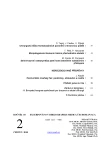Mechanism of injury of transitional ankle fractures
Authors:
Tomáš Pešl; Petr Havránek
Authors‘ workplace:
Klinika dětské chirurgie a traumatologie 3. LF Univerzity Karlovy v Praze
Fakultní Thomayerova nemocnice v Praze, Krči
Dept. of Pediatric and Trauma Surgery
; rd Faculty of Medicine Charles University
Thomayer Teaching Hospital, Prague, Czech Republic
3
Published in:
Úraz chir. 18., 2010, č.2
Tématika předkládané práce je podporována grantem IGA MZ ČR reg. č. NS10428-3/2009. Etická komise vyslovila s projektem souhlas.
Overview
Aim of the study:
Juvenile Tillaux and triplane fractures are believed to be caused by avulsion of the lateral portion of the tibial epiphysis by the anterior tibiofibular ligament. On the other hand, Ogden presumed that as the foot is externally rotated, the talus develops a compressiontorque stress creating a crack through the articular surface up to the growth plate, which then shears. However, there is no evidence of these theories in scientific literature and that is why we made an attempt to verify these two theories.
Material and methods:
All patients with juvenile Tillaux (JTF) or triplane fractures (TF) treated in our department during the period 1990–2009 (20 yrs) were reviewed. Beside this, we have reviewed also osteochondral fractures of the talar dome in patients treated for ankle injury during the same period.
Results:
One hundred and fiftynine patients were diagnosed with JTF or TF. Fifty children had JTF and one hundred and nine had TF (ni-nety nine lateral and ten medial TF). Osteochondral fracture of the talar dome was identified in twenty five adolescent patients with cessation of distal tibial growth (seventeen on the lateral trochlear edge and eight on the medial trochlear edge). In our cohort of transitional fractures, there were four patients with intraepiphyseal fractures of the tibial mortise located out of the ligamental insertion.
Conclusion:
Osteochondral fractures of the lateral edge of the talar dome and intraepiphyseal fractures of the tibial mortise (located out of the insertion of the anterior tibiofibular ligament) indicate, that the Ogden’s pathomechanical „shearing“ theory of transitional ankle fractures is much more probable than the „avulsion“ theory.
Key words:
tibia, talus, osteochondral fracture, physis, fracture, child.
Sources
1. BERNDT, A.L., HARTY, M. Transchondral fractures (osteochondritis dissecans) of the talus. J Bone Joint Surg. 1959, 41A, 988–1020.
2. CLEMENT, D.A., WORLOCK, P.H. Triplane fractu-re of the distal tibia. J Bone Joint Surg. 1987, 69B, 412–415.
3. CRAWFORD, A.H., AL-SAYYAD, M.J., MEHL-MAN, C.T. Fractures and dislocations of the foot and ankle. In: Green NE, Swiontkowski MF (eds) Skeletal trauma in children. Philadelphia: Saunders Elsevier, 2009. 507–584.
4. CUMMINGS, R.J., SHEA, K.G. Distal tibial and fi-bular fractures. In: Beaty JH, Kasser JR (eds) Rock-wood´s and Wilkins´ Fractures in children. Phila-delphia: Lippincott Williams Wilkins, 2010. 967–1016.
5. DIAS, L.S., TACHDJIAN, M.D. Physeal injuries of the ankle in children. Clin Orthop. 1978, 136, 230–233.
6. GROSS, R.H. Ankle fractures in children. Bull NY Acad Med. 1987, 63, 739–761.
7. HORN, B.D., CRISCI, K. et al. Radiologic Evalua-tion of Juvenile Tillaux fracture of the distal tibia. J Pediatr Orthop. 2001, 21, 162–164.
8. KAY, R.M., MATTHYS, G.A. Pediatric ankle fractu-res: evaluation and treatment. J Am Acad Orthop Surg. 2001, 9, 268–278.
9. KLEIGER, B., MANKIN, J. Fracture of the lateral portion of the distal tibial epiphysis. J Bone Joint Surg. 1964, 46A, 25-32.
10. LALONDE, F., PRING, M.E. Ankle. In: Wegner DR, Pring ME (eds) Rang´s children´s fractures. Phila-delphia: Lippincott Williams Wilkins, 2005. 227–242.
11. MACNEALY, G.A., ROGERS, L.F., HERNANDEZ, R. Injuries of the distal tibial epiphysis: systematic ra-diographic evaluation. Am J Roentgenol. 1982, 138, 683–689.
12. MARMOR, L. An unusual fracture of the tibial epi-physis. Clin Orthop. 1970, 73, 132–135.
13. OGDEN, J.A. Skeletal injury in child. New York, Springer, 2000.
14. PETERSON, H.A. Epiphyseal growth plate fractures. Berlin, Springer, 2007.
15. PEŠL, T., HAVRÁNEK, P. Rare injuries to the distal tibiofibular junction in children. Eur J Pediatr Surg. 2006, 16, 255–259.
16. PEŠL, T. Poranění tibiofibulární vidlice hlezenního kloubu rostoucího skeletu. Dizertační práce; Praha, 1. lékařská fakulta Univerzity Karlovy, 2006.
17. VON LAER, L. Pediatric fractures and dislocations. Stuttgart, Thieme, 2004.
Labels
Surgery Traumatology Trauma surgeryArticle was published in
Trauma Surgery

2010 Issue 2
- Metamizole vs. Tramadol in Postoperative Analgesia
- Metamizole at a Glance and in Practice – Effective Non-Opioid Analgesic for All Ages
- Spasmolytic Effect of Metamizole
- The Importance of Hydration in Wound Healing
- Obstacle Called Vasospasm: Which Solution Is Most Effective in Microsurgery and How to Pharmacologically Assist It?
Most read in this issue
- Mechanism of injury of transitional ankle fractures
- Surgical treatment of frontobasal injury with CSF leak-our experience
- Semiinvasive lateral subtalar aproach for osteosynthesis of calcaneal fractures
